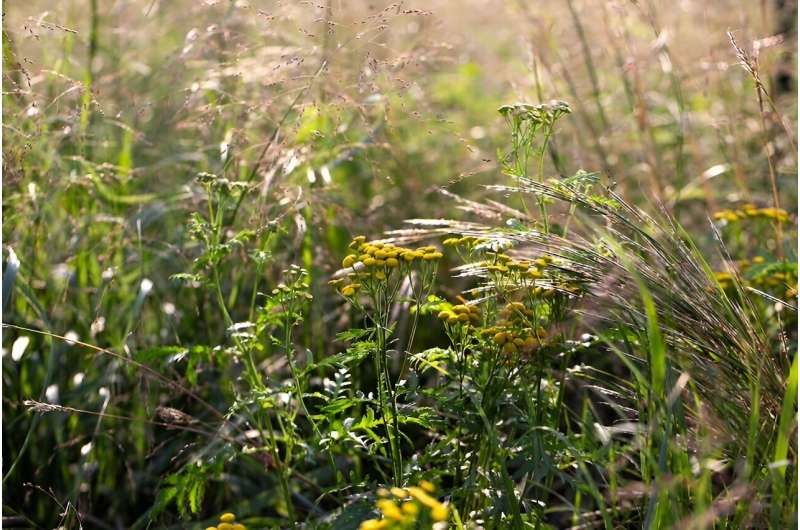This article has been reviewed according to Science X's editorial process and policies. Editors have highlighted the following attributes while ensuring the content's credibility:
fact-checked
peer-reviewed publication
trusted source
proofread
Land use impacts Minnesota's invasive tansy spread, study finds

Common tansy, whose scientific name is Tanacetum vulgare, is an invasive plant found in Northeastern Minnesota spreading rapidly throughout the state. It can quickly establish dense monocultures that squeeze out native plants and is difficult and costly to remove.
Invasive species cause billions of dollars of economic and ecological damage annually. One of the keys to stopping invasion is understanding how a species moves and adapts as it spreads. Using this information, experts can develop effective plans for targeted management and eradication.
In a new study published in Molecular Ecology, researchers used genomic sequencing of common tansy taken from 176 sampling locations across the state to investigate how the species spreads so rapidly.
The research team found:
- Land use was critical in the spread of common tansy, which likely occurred in disturbed areas such as mines, along roadways and through pastures.
- Common tansy does not spread well through established prairie grasslands or row cropland, which appears to have slowed the invasion in south and west Minnesota.
- Recent populations in northwest Minnesota have genetically diverged—possibly indicating adaptation during invasion that may accelerate future spread.
- The species colonizes and establishes on a local level by spreading between sites that have moderately to well-drained soils.
"Understanding what environmental factors drive invasive spread allows researchers and land managers to better plan for and deal with the threat of common tansy and other invasive species," said lead author Ryan Briscoe Runquist, a senior research associate in the College of Biological Sciences.
"Although the invasion has slowed in the west and south of the state due to heavy row crop cultivation, common tansy may continue to invade along disturbed roadcuts. Land managers should pay attention to these habitats in regions along the invading front to stop continued invasive spread," added Runquist.
The next step for the research team is to see if common tansy has adapted to different climates and environments across the invaded range in Minnesota. They will focus on how populations from different regions perform when transplanted across the state and what plant traits may allow for greater survival and reproductive success.
The team hopes to do additional genomic studies to investigate areas of the genome and plant traits that have been the subject of adaptation in the future.
More information: Ryan Briscoe Runquist et al, Isolation by environment and its consequences for range shifts with global change: Landscape genomics of the invasive plant common tansy, Molecular Ecology (2024). DOI: 10.1111/mec.17462
Journal information: Molecular Ecology
Provided by University of Minnesota


















